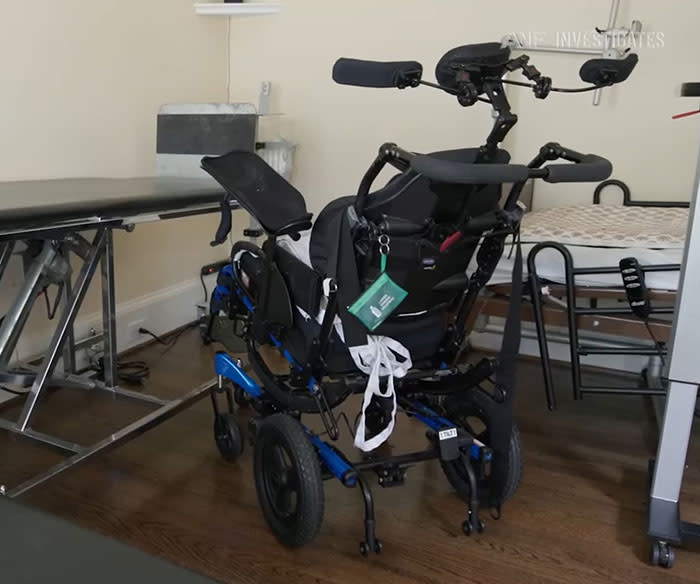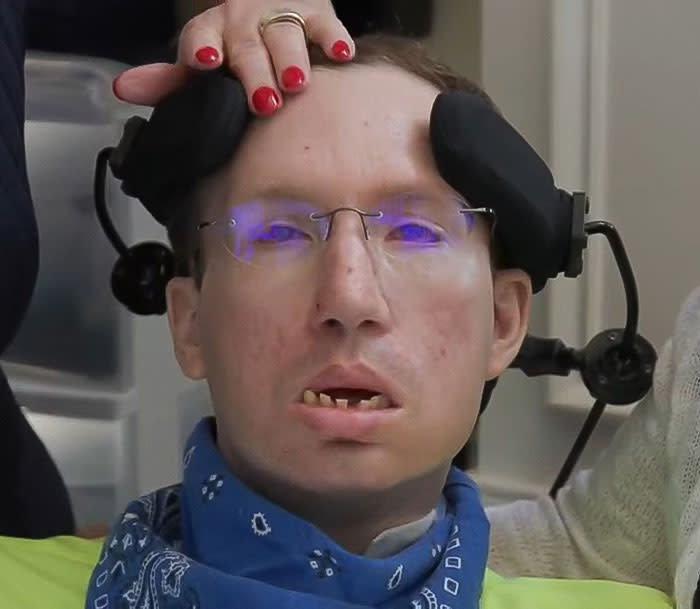Jonathan Buckelew was 24 and loved staying active. The young athlete played basketball, soccer, and hit the gym regularly. That October in 2015, he decided to see a chiropractor for what seemed like a routine neck adjustment. But during the appointment, something went wrong. Jonathan became dizzy and disoriented.
Racing Against Time
According to reports, Jonathan was having a stroke during the chiropractic adjustment. It was affecting his brainstem, the part of his brain that controls basic functions like breathing and movement. Brain cells were dying fast. Paramedics rushed him to North Fulton Hospital. Doctors had just a few hours to act before the damage became lasting. With stroke patients, every minute matters for the chance of recovery.
How Doctors Missed the Cervical Adjustment Connection
When Jonathan arrived at the hospital, doctors made mistakes. Two emergency room doctors failed to realize he was having a stroke, and the misdiagnosis cost him precious hours. The first doctor never told the brain specialist that Jonathan had just been to a chiropractor. He also missed a second seizure-like episode that happened while Jonathan was in the hospital. The radiologist also missed the stroke on his brain scan.
These errors delayed treatment for hours as brain cells continued dying. Missing strokes like Jonathan’s are common. Doctors fail to catch minor strokes 30 to 50 percent of the time, making this one of emergency medicine’s biggest challenges.
Living with Locked-In Syndrome
Jonathan’s stroke left him with a rare condition called locked-in syndrome. His mind works perfectly. He can think, feel, and understand everything around him. But his body won’t respond. Now 34, Jonathan can only move his eyes up and down and blink. That’s how he communicates with his family.
People with locked-in syndrome are aware but trapped inside a body that won’t move. Only about 1,000 Americans develop this condition each year. The same Jonathan who had been an active athlete before that neck adjustment now needs help with everything.
Read More: Is Cracking Your Neck Harmless or a Hidden Danger?
Turning Home into a Medical Center
The Buckelew family had to completely change their home to keep Jonathan alive. Their garage now looks like a medical storage room, packed with breathing machines, feeding tubes, and monitoring equipment that runs 24 hours a day. They rebuilt rooms throughout the house to fit his wheelchair and medical bed. Jonathan spends much of his time watching fish swim in an aquarium, one of the few things he can still enjoy.
Nurses stay with him around the clock. They help him breathe, give him nutrition through tubes, and watch his vital signs. Jonathan can’t swallow, speak, or breathe on his own, so this constant care keeps him alive.
Neurological Impact of the Neck Adjustment
The stroke hit a tiny but important part of his brain called the pons. This area is only about two inches long, but it works like the control center between the brain and the rest of the body.
When the stroke damages this spot, it cuts the connection that sends movement signals from the brain to the muscles. Think of it like cutting telephone wires. The brain can still think and feel everything, but the messages telling the body to move can’t get through.
Most people who get locked-in syndrome are between 30 and 50 years old, making his case at age 24 unusual. Unlike someone in a coma, he is completely awake and aware of everything happening around him.
Justice and a Record Verdict
A Fulton County jury decided the emergency room doctor and radiologist were responsible for missing the stroke. They awarded the family $75 million, the largest emergency room malpractice case in Georgia history.
During the trial, lawyers showed exactly how the doctors failed to diagnose the stroke and didn’t properly connect Jonathan’s symptoms to the cervical adjustment he had received. The hospital and chiropractic office were cleared of any wrongdoing.

The $75 million will pay for his lifetime care. This includes all the medical equipment, round-the-clock nursing, and home changes he needs. The emergency room doctor has appealed the decision and may take the case to the Georgia Supreme Court.
Read More: Doctor Demonstrates How to ‘Instantly’ Give Headache Relief, and People Can’t Believe It Works
Why Strokes Get Missed
Doctors miss diagnoses for about 12 million Americans every year. Of those cases, roughly 4 million people get hurt because their condition wasn’t caught in time. Strokes like the one that hit him are especially hard to spot. Brainstem strokes don’t always look like the classic strokes most doctors expect to see. Patients might not have the typical drooping face or slurred speech that makes strokes obvious.
Emergency rooms are also incredibly busy places. Doctors see multiple patients at once and have to make quick decisions under pressure. When you combine the time crunch with an unusual case, mistakes can happen.
Technology and Hope for Recovery
People with locked-in syndrome can now use computers by moving their eyes to control a cursor on the screen. This technology lets them browse the internet, send emails, and control things in their room just by looking. Speech therapists work with families like the Buckelews to set up ways to communicate using eye blinks and movements. Each family develops their own system that works best for them.

There is some hope for getting better. About half of people with locked-in syndrome get back some limited movement over time. Around one-third may regain some ability to speak within the first year. Getting back to normal, though, rarely happens.
Finding Meaning in a Changed Life
Studies show that many people with locked-in syndrome, whether from a neck adjustment gone wrong or other causes, can still have meaningful lives when they get the right support and technology. Jonathan’s family works every day to keep him comfortable and find activities he can enjoy despite his limitations. His story shows how medical mistakes can destroy a life in an instant. But it also shows how families can find strength to adapt to even the hardest situations.
Read More: Adrenal Fatigue: Myth or the Hidden Cause of Your Fatigue?
